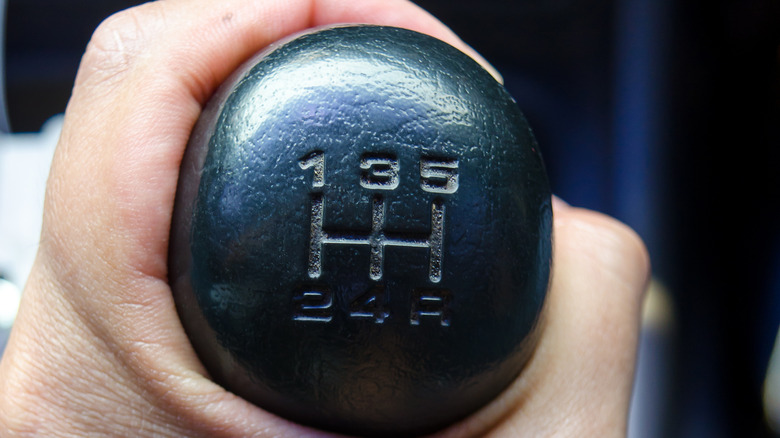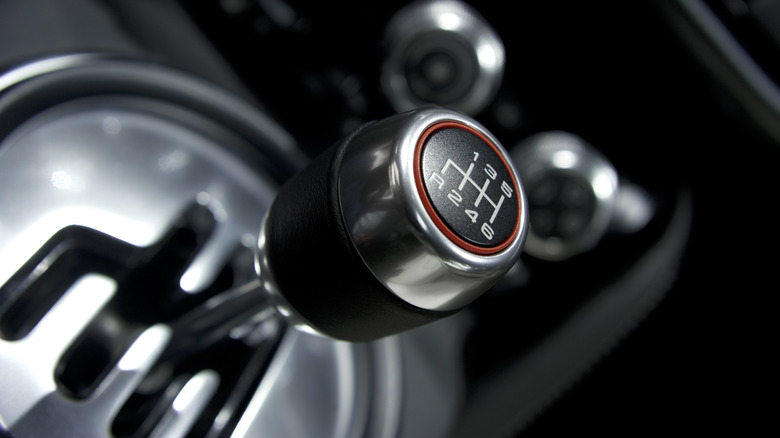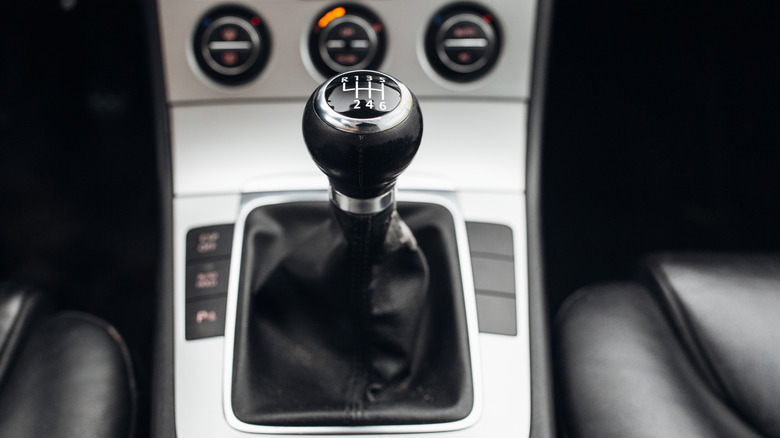How And When To Use The Neutral Gear For A Manual Transmission Vehicle
Simply getting from Point A to Point B in a vehicle can be a somewhat different experience depending on whether you're using a manual or automatic. They'll both get you where you need to go, but there's a bit more work involved in driving a manual transmission — though it can be worth the effort.
The big difference is how they each navigate (or require you to navigate) through various gears to pick up speed, slow down, and reverse. Automatics and manuals even have Neutral gear in common, but the function works a little differently in the former compared to the latter.
Knowing when and how to use Neutral in a manual transmission is arguably more important than it is with an automatic. However, oddly, the process is a bit simpler than with an automatic. Some of the more extreme situations that call for Neutral are similar between the two, but if you're new or not used to driving manual, there are a few more instances where you'll want to go into this not-quite gear.
What is Neutral?
Neutral isn't a gear you'll be using most of the time as, by design, it disconnects the engine from the car's wheels. This allows the vehicle to coast via momentum or gravity rather than being propelled by the engine.
With manual transmission, Neutral is the spot between gears rather than a separate setting like First or Reverse. By pushing in the clutch and moving the gear shifter out of its current gear (but not into a new one), you'll put the car into Neutral. One good way to double-check without letting up on the clutch is to try wiggling the shifter from side to side. If it moves freely, you're probably in Neutral.
While you won't be able to use the accelerator to pick up speed in Neutral (because of that engine disconnect), the car isn't out of control. You can still steer as you normally would, and the brakes are just as functional as when the car is in combustion-driven motion. Of course, this neutral drifting also means that the car's speed depends on how fast it was going before entering Neutral, and whether it's on an incline or decline. So if you're facing uphill, expect it to roll backward if it's Neutral.
When Neutral is necessary
You'll regularly pass through Neutral on your way to and from other gears while driving, but it's not something you're likely to use very often with intention while driving. Purposely shifting into and keeping your car in Neutral is more situational.
One of the most common uses for Neutral is any time you're stopped while the engine is still running — traffic lights, jams, that kind of thing. Staying in a gear while stopped can cause unnecessary wear and tear on the clutch and brakes, burn through transmission fluid, and waste a bit of gas. Also when you're stopped and in Neutral, you can take your foot off the clutch and give it a bit of a rest.
Neutral is also necessary whenever your car is passively being moved by any other means besides the engine. If the engine's stalled and you need to push it, put it in Neutral; if you're getting pulled through an automatic car wash, go Neutral; if you're being towed with all four wheels on the ground, Neutral.


